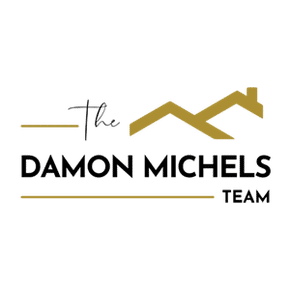Washington Square West
About Washington Square West
The name "Washington Square West" came into official use in the late 1950s and early 1960s as part of Edmund Bacon's comprehensive plan for Center City. In this plan, the south-east quadrant of center city was split into Washington Square East (more commonly known as Society Hill) and Washington Square West. Both neighborhoods were scheduled for urban renewal by Philadelphia's City Planning Commission and Redevelopment Authority. After a period of decline in the early 20th century, city officials hoped that redevelopment would clean up the neighborhood and clear blighted areas.
After large-scale renewal of Washington Square East/Society Hill in the early 1960s, the Philadelphia Redevelopment Authority turned to Washington Square West. In the late 1960s, the Redevelopment Authority bought and demolished buildings and, by the mid 1970s, owned one fifth of the neighborhood. By this time, however, federal money available for urban renewal had declined and the city was no longer able to fund the renewal of Washington Square West. Buildings razed by the city in the 1960s and 1970s were left as empty lots and the neighborhood was left in a state of decline. Through the late 1970s and 1980 began a slow recovery without the aid of the large-scale redevelopment that had occurred in Society Hill. The 1990s saw a shift in the neighborhood as Mayor Ed Rendell encouraged investment in Center City and gentrification began to take hold. By the end of the 1990s and early 2000s, the neighborhood had transformed into an economically vital community.
The Washington Square West Historic District was added to the National Register of Historic Places in 1984. The 61-acre (250,000 m2) area encompasses 450 contributing buildings. Located in the district and separately listed are the Clinton Street Historic District, Roberts-Quay House, and Portico Row.
Washington Square West is a neighborhood in downtown, or Center City, Philadelphia, Pennsylvania. The neighborhood roughly corresponds to the area between 7th and Broad Streets and between Chestnut and South Streets, bordering on the Independence Mall tourist area directly northeast, Market East to the northwest, Old City and Society Hill to the East, Bella Vista directly south, Hawthorne to the southwest, and mid-town Philadelphia and Rittenhouse Square to the west. In addition to being a desirable residential community, it is considered a hip, trendy neighborhood that offers a diverse array of shops, restaurants, and coffee houses. The area takes its name from Washington Square, a historic urban park in the northeastern corner of the neighborhood.
Philadelphia's Antique Row lies in the area as does the nation's oldest hospital, Pennsylvania Hospital. Educational and medical facilities associated with, Thomas Jefferson University, a leading regional medical university and health care center, are located within the neighborhood. The one-time headquarters of the former Curtis Publishing Company and the University of the Arts lie at the edges of the neighborhood.
Washington West's real estate is mixed commercial, residential and service industries, characterized by two, three, and four-story rowhouses interspersed with condominiums, mid-rise apartments, hospitals and offices with ground-floor retail. The neighborhood follows William Penn's original grid layout for the city, with many one-lane and pedestrian side streets added later as the population became more dense. In addition to the block sized Washington Square Park to the East, the neighborhood contains the smaller Kahn Park, named after the Philadelphia architect Louis Kahn.
Read More ▾Avg Work Commute
0 minsMedian Age
0Median Area Income
$0Median Sale Price
$0The Commute
Travel Methods
To City CenterWashington Square West Sales Data
Percentage change from latest quarter vs same time period previous year
Data compiled using 4th quarter 2023 data vs. same period from 2022
Median Sales Price
MEDIAN SALES PRICE

Demographics
- Filter by:
- Population
- Income
- Education
- Market Rents
Population by Age Level. Median Age 35.52. Households: 8,501.
In Thousand of Dollars. (Median Income: $78,524)
Population by Education Level
Fair Market Rents
Washington Square West Schools & Education
Public & Private Institutions Of Learning
Education in the United States is provided by public, private and home schools. State governments set overall educational standards, often mandate standardized tests for K–12 public school systems and supervise, usually through a board of regents, state colleges, and universities. Discover the K12-powered public or private school that is best suited for your child's needs in the area.
Avg School Rating
3.0/5Publically Funded
9Catholic / Religious
1Private / Charter
4Publically Funded
Fanny Jackson Coppin School
Elementary School
- Preschool - 8th Grade
- Student - Teacher Ratio: 13 : 1
-
Great School Rating:
- Website
Nebinger George W School
Elementary School
- Preschool - 8th Grade
- Student - Teacher Ratio: 12 : 1
-
Great School Rating:
- Website
Kirkbride Eliza B School
Elementary School
- Preschool - 8th Grade
- Student - Teacher Ratio: 14 : 1
-
Great School Rating:
- Website
Vare-Washington Elementary School
Elementary School
- Preschool - 8th Grade
- Student - Teacher Ratio: 13 : 1
-
Great School Rating:
- Website
Christopher Columbus Cs
Elementary School
- Kindergarten - 8th Grade
- Student - Teacher Ratio: 15 : 1
-
Great School Rating:
- Website
Meredith William M School
Elementary School
- Kindergarten - 8th Grade
- Student - Teacher Ratio: 15 : 1
-
Great School Rating:
- Website
Christopher Columbus Charter North
Elementary School
- Kindergarten - 5th Grade
- Student - Teacher Ratio: Not Reported : 1
- Great School Rating: N/A
- Website
Creative And Performing Arts
High School
- 9th Grade - 12th Grade
- Student - Teacher Ratio: 15 : 1
-
Great School Rating:
- Website
Academy At Palumbo
High School
- 9th Grade - 12th Grade
- Student - Teacher Ratio: 19 : 1
-
Great School Rating:
- Website
Catholic / Religious
Roman Catholic High School
High School
- 9th Grade - 12th Grade
- Student - Teacher Ratio: 20 : 1
- Great School Rating: N/A
- Website
Private / Charter
Student Education Center And Delaware Valley High School Cc
High School
- 8th Grade - 12th Grade
- Student - Teacher Ratio: 9 : 1
- Great School Rating: N/A
- Website
St. Peter's School
Elementary School
- Preschool - 8th Grade
- Student - Teacher Ratio: Not Reported : 1
- Great School Rating: N/A
- Website
Settlement Music School Head Start
Pre School
- Preschool - Preschool
- Student - Teacher Ratio: 6 : 1
- Great School Rating: N/A
- Website
Beginnings Learning Center
Other School
- Student - Teacher Ratio: Not Reported : 1
- Great School Rating: N/A
- Website
Where To Drink, Dine, Shop, Relax & Recline







































































































